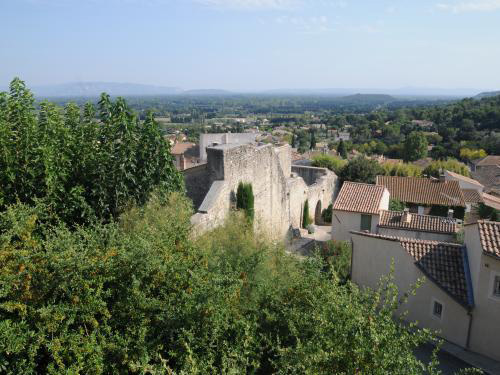
Châteauneuf de Gadagne takes its name from a famous family from Florence in Italy, the Guadagni whose motto was "The obstacle increases my ardor".
Chateauneuf de Gadagne was said to be a perched village, built in an amphitheater.
Today Chateauneuf de Gadagne is renowned for its setting, its quality of life, its heritage and its past.
Châteauneuf de Gadagne is also famous for its feudal castle which was one of the most imposing in the region before being dismantled after the Revolution.
The village has many remains of fortifications with ancient gates, the church, La Croix, a war memorial, fountains, a chapel dedicated to Saint Roch, and the unmissable Château de Fontségugne a symbolic place of Provencal Culture.
Châteauneuf de Gadagne is also a famous vineyard, appellation Côte-du-Rhône.
If the visit of the village offers to the visitors a maze of alleys and shaded places typically Provencal.
One must go to the plateau of Campbeau where there is a Monument to the Dead due to the sculptor Jean-Pierre Gras and the tomb of a benefactor of the commune, Pierre-Marie d'Alcantara Goujon.
From the Plateau de Campbeau, one can admire the Mont-Ventoux, the Monts de Vaucluse, the Luberon chain and the Alpilles chain.
To the north of the plateau, you should not miss the Château de la Chapelle and its public park, its playful course for children with the Bois de l'Aventure.
The cradle of Félibrige
But Châteauneuf de Gadagne is above all the cradle of Félibrige, the literary, artistic and cultural movement of the revival of the Provençal language. Signs on the road leading to the village proudly announce it as "Castel Nou de Gadagno, Brès dou Felibrige".
History will remember that on May 21, 1854, at the castle of Fontségugne, Frédéric Mistral and his friends Paul Giéra, Joseph Roumanille, Théodore Aubanel, Anselme Mathieu, Jean Brunet, Anfos Tava... founded the Félibrige.
One of the first documents written was, in 1855, an almanac, "l'Armana Provençau" which announced the next events and festivals and proposed the History of Provence to make it better known.
The traditions are perpetuated in Châteauneuf de Gadagne. Among them, Les Veillées Provençales (Provençal Wakes) where you can relive the wakes of yesteryear and listen to tales, poems, songs. The Meal of the Thirteen Desserts eaten on the Saturday before Christmas, one of the greatest Provencal traditions.
During the Provencal Day organized by the Escolo de Font-Ségugno, every year in September, the program includes conferences and symposiums on Provencal cuisine. The participants gather around a meal and a show.
http://www.chateauneufdegadagne.fr/
Translated with www.DeepL.com/Translator
(free version)




